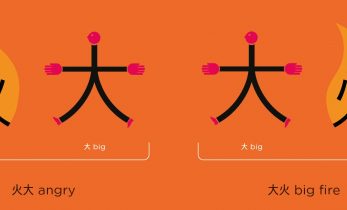Greater than 6 minutes, my friend!
Efforts at Turning Mud into Gold by “The Translation Industry” Could Use a Better Analysis in the Media
Articles in mainstream media that are ostensibly analyzing the problem of machine translation almost always try to confuse the reader by pretending that the real problem is not with the frequent occurrences of mistranslations that may be very difficult to detect, but with the style of machine translations. I see this as a misdirection that is used to turn the audience’s attention away from the possibility that the fatal problem could be the basic premise of how machine translation works.
According to a New York Times article titled “Is Translation an Art or a Math Problem” that was linked by a commenter in the comment section of my last blog post, “Warren Weaver [described in the article as a founder of the discipline] conceded: “No reasonable person thinks that a machine translation can ever achieve elegance and style. Pushkin need not shudder.”
“The whole enterprise introduces itself in such tones of lab-coat modesty”, continues the article.
Pushkin need not shudder? How original (it’s usually Shakespeare who is put down in this manner in these types of articles, at least in English). What a pretentious thing to say! It’s like saying that you can’t defeat a mighty army equipped with tanks, bombs and machine guns with ice cream and chocolate chip cookies. Gee, who would have guessed?
The problem with machine translation is not style. Unlike in the days of Jane Austin, style means very little in modern society. The article in the New York Times then goes on to say, among other things, this in a paragraph describing visionary machine translation developers:
“But human translators, today, have virtually nothing to do with the work being done in machine translation. A majority of the leading figures in machine translation have little to no background in linguistics, much less in foreign languages or literatures.”
Unfortunately, the author of the article doesn’t know seem to know anything about translation either. When I Googled the author’s name, I discovered that “he lived in San Francisco, Berlin and Shanghai”. But based on how the problem with machine translation is presented in the article, I would bet a farm (if I had one) that he does not speak German or Chinese. You may be able to form your own opinion about foreign languages when you live abroad for a while. But foreign languages cannot be learned by osmosis. You have to work on them, often for decades, and that would be just too much to ask from people who write articles about translation for The New York Times.
Why is it that it’s always non-translators who are asked to ponder the mysteries of machine and human translation on our mass media? How could they possibly know anything about something they don’t understand? Why is it that you don’t need to know anything about languages, let alone translation, to write treatises on human and machine translation that apparently deserve to be taken seriously?
A 14-year-old virgin, writing an advice column for married couples on sex for The New York Times, or pretending to be a sexologist worthy of being listened to by grownups, would probably not be taken seriously. Because if you’ve never had sex, you obviously cannot possibly know anything about it. The 14-year-old virgin’s musings might be of some value to psychologists studying issues related to mental health of children, but probably not a whole lot.
But when you see an article about machine translation published in lame stream media such as The New York Times or The New Yorker, it’s always written by people who can’t translate and generally don’t know anything about foreign languages.
And if an article about machine translation is published by a translators’ association, it is invariably written by somebody who is obviously trying to ride the gravy train of “the translation industry” by selling machine pseudo-translation as a viable alternative to real translation, which is to say human translation. It’s an unfortunate fact that the ATA Chronicle, which bills itself as “The Voice of Translators and Interpreters” has now become “The Voice of the Translation Industry”. The truth is, while the Chronicle has been publishing articles selling machine translation for years, it has never published an article that would attempt to critically analyze the faulty premise that is at the root of the obvious problems with machine pseudo-translation.
But let’s get back to the article in the New York Times. I would like to suggest to its author another reason why translators generally don’t join the ranks of machine translation developers, unless they see it as an easy way to make mucho dinero by promising their clients that they can turn mud into gold.
The reason why human translators don’t want to have anything to do with machine translation is that unlike non-translators, they understand that MT is being sold to an unsuspecting public in a quest for an easy way to turn mud into gold, or a quest for perpetuum mobile, by charlatans who are trying to sell MT to gullible clients as a new business model while falsely promising to save a lot of money with machine translation.
True, you can save a lot of money if you buy the concept of machine-pseudo translation as a realistic alternative to human translation. The question is, how much money will you ultimately lose if your advertising, strategic decisions, and other information are based on undetected mistranslations?
You can turn mud into bricks and build beautiful houses from mud that has been only slightly post-processed by heat. But you cannot turn mud into gold, although charlatans called alchemists were able to make a very good living at various courts in Medieval Europe for quite a few decades by claiming that they will soon be able to do that. And there is no perpetuum mobile beyond Sun, wind, and oceans, and never will be, although some people are still looking for it.
What machine translation developers are trying to do is to convert with fast computers and beautiful algorithms “linguistic corpora” into something that will mean the same thing in the translation as it did in the original language. But it cannot be done because in order to do that, you need a tricky, ephemeral ingredient called “meaning”. Unfortunately, this tricky ingredient has its origin in the human brain, which is the only place where meaning can be created, and then recreated in another language.
Translators understand this simple fact. Computer programmers and greedy salespeople of pseudo-machine translations stubbornly refuse to even acknowledge it.
Machines need not apply for a job that would require them to understand and evaluate what is being said or written. Regardless of their processing speed, their systems of algorithms, and a quasi infinite linguistic corpora that may be stored in the cloud and made available to these machines, they will never be able to do that.
Machine translation sometimes makes very good sense, and under some predefined circumstances it may even make sense frequently. But it can only make sense if the input (the text fed to the machines) is controlled by humans, the same humans who will then still be very busy massaging the ingredient called meaning into the output end of the machine translation perpetuum mobile.
If machine translation is to make sense in another language and mean the same thing as the original, the input must be strictly and restrictively controlled, and the output (the resulting translation) too must be controlled by humans, namely translators who understand this original text, who some people in “the translation industry” would love to turn into post-processors of machine translation.
In other words, the same information must be retranslated by humans if what you need is a real translation rather than just machine translation.
Translation is both “a math problem” and “an art problem”. This is not an “either/or” problem as the article seems to suggest. The problem is much bigger than that, as just about every translator will understand, immediately and intuitively. The reason why computer programmers and mathematicians working on machine translation solutions keep firing human translators is very simple: human translators keep telling these computer programmers and mathematicians that the problem cannot be solved with technology and algorithms, and the programmers don’t want to hear it because technology and algorithms are the only things they know and understand.
It may take a few more decades before most humans realize that just like it made very good sense to stop looking for ways to turn mud into gold (because something like that isn’t possible) and that it might be better instead to look for ways to create better bricks from mere mud, it also makes much more sense to stop pretending that machine translation that is just as good as human translation (except maybe for the style) is just around the corner. We must look instead for machine translation that will simply be a better and more accurate tool for humans, translators and non-translators alike.
Let’s stop pretending that machine translation will soon “be just as good as human translation”, except maybe for a slightly deficient style. We can start by realizing that the false modesty of an MT founder who is graciously willing to allow Pushkin for time being to sleep his eternal dream when he says that the Russian literary giant needs not shudder in his grave as a result of his depressing thoughts in the netherworld about the linguistic, contextual and stylistic superiority of machines over the human brain is in fact haughty arrogance of a pretty foolish person.




